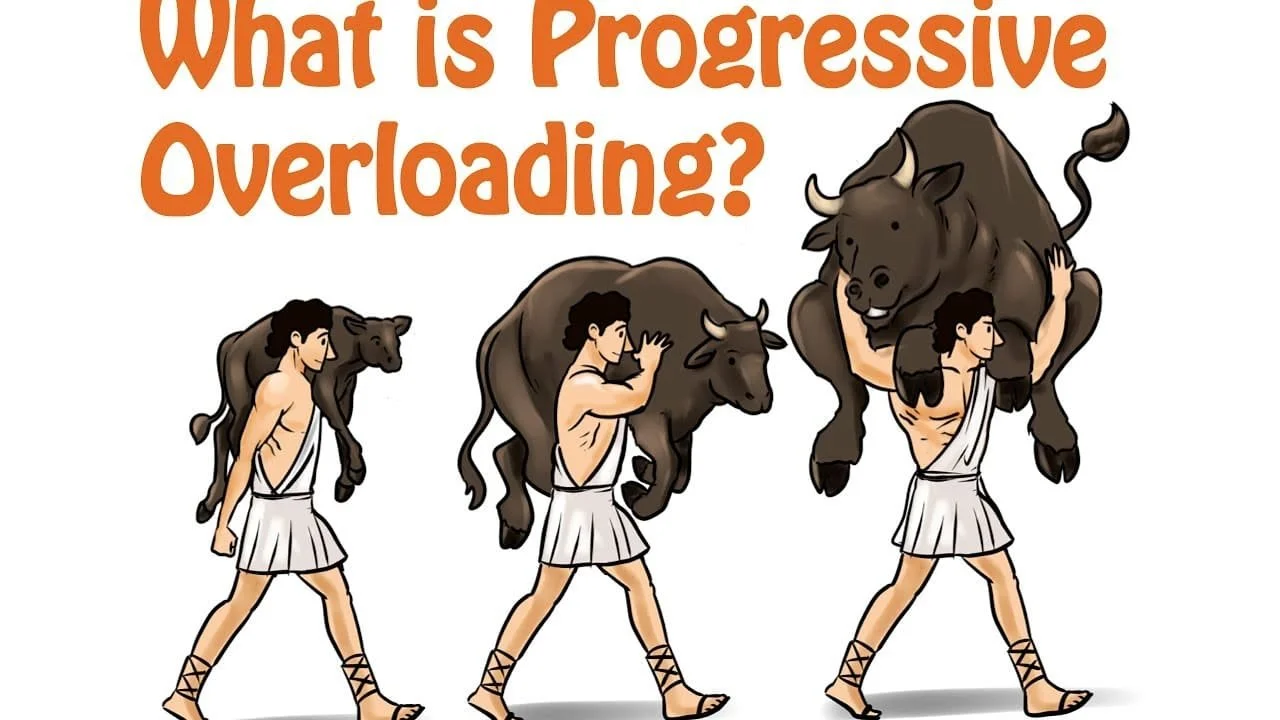Progressive Overload
Ever heard of the term “progressive overload”? It’s become common nowadays and one of the most popular methods of muscle growth. However, there are quite a few ways one can achieve progressive overload safely, so let’s figure out how it works.
Defining Progressive Overload:
Progressive overload refers to one of the many ways of attaining musculoskeletal growth. It’s normally seen in weight training, and usually involves one of two things: increasing the frequency and/or the intensity of your training. The point of increasing either aspect is to constantly challenge your body and provide stimulus for muscle growth. Such a push on your body is necessary in order to counter the effects of muscular adaptations. As your body grows stronger, training that was previously challenging to you may not even affect your body anymore, something vital for muscle hypertrophy. Without challenge, muscle growth eventually plateaus.
Beginners also sometimes confuse progressive overload with training to failure. Training to failure is not necessary when it comes to progressive overload, as with progressive overload you’re only required to incrementally increase your training. This is usually doable and doesn’t end with training to failure.
Methods of progressive overload:
If someone were to perform leg extensions with four sets of 10 reps at 100 lbs. and 90 seconds of rest, the following would be examples of progressive overload:
Increasing the rep range from 10 reps to 15 reps a set
Increasing the number of sets from 3 to 4 sets
Increasing the load from 100 lb to 110 lb
Decreasing the rest time from 90 seconds to 60 seconds
There’s been a recent study conducted by TS Chaves, on the different effects of increasing frequency, volume, and intensity. Surprisingly, increasing one or the other leads to very similar results in terms of muscle strength and cross sectional areas within the muscle. This means that most people can do one or the other and still have the same effect on muscles.
Decreasing rest time in between sets is also considered progressive overload, because you would be doing the same amount of work in less time, which, as a greater stimulus, puts a greater strain on the muscles.
Overloading Safely:
Many people think progressive overload is just “working harder than last time”, but that is merely an oversimplification. As progressive overload involves increasing intensity and or/volume, there are general guidelines that should be followed in order to overload safely. Below are two overarching rules of overloading:
10% rule
The 10% rule is a general rule of thumb, and can be used to determine how much of any one factor to increase at a time. Take running for example. If a runner were to have a weekly mileage of 50 miles, his next weekly mileage increase should not exceed a 5 mile increase in volume. Generally speaking, the maximum 10% increase of volume or intensity occurs after a week’s worth of training (although this depends on the individual’s recovery).
2 for 2 rule
The 2 for 2 rule on the other hand does not occur on a weekly basis, but rather a biweekly basis. Weight training could be used as an example (using the leg extension example from earlier). Suppose your rep goal of a set is 10 reps originally, then you can increase the leg extensions weight if you’re able to complete 2 extra reps PER set for 2 weeks straight. This would be an indicator that you’re strong enough/ready for a progressive overload.
Make up your own
The 10% and 2 for 2 rules should apply on a general basis, but are merely relative indicators of when to increase weight load. Since every person is different, people may experiment with how long it takes for their body to adapt to certain loads/frequencies, and incrementally increase as seen fit.
Conclusion:
Whether you’re just starting out or you’ve had experience training, progressive overload should be one of the most essential parts of any training routine. It stimulates muscle growth, avoids plateaus, and the multitude of safety guidelines easily prevent injury.
Sources:
Chaves TS;Scarpelli MC;Bergamasco JGA;Silva DGD;Medalha Junior RA;Dias NF;Bittencourt D;Carello Filho PC;Angleri V;Nóbrega SR;Roberts MD;Ugrinowitsch C;Libardi CA; “Effects of Resistance Training Overload Progression Protocols on Strength and Muscle Mass.” International Journal of Sports Medicine, U.S. National Library of Medicine, pubmed.ncbi.nlm.nih.gov/38286426/. Accessed 23 Mar. 2024.
Vossen, Loek. “Progressive Overload: The Ultimate Guide.” GymAware, 19 Mar. 2024, gymaware.com/progressive-overload-the-ultimate-guide/#:~:text=What%20is%20the%202%20for,to%20start%20a%20progressive%20overload.
Robles, Alex. “The Progressive Overload Principle (10 Effective Ways to Use It).” The White Coat Trainer, 4 Nov. 2022, whitecoattrainer.com/blog/progressive-overload-principle.
“Total Force Wellness Column: Guidelines to Progress Your Physical Training over Time.” United States Coast Guard, 28 Jan. 2022, www.mycg.uscg.mil/News/Article/2910464/total-force-wellness-column-guidelines-to-progress-your-physical-training-over/#:~:text=The%20rule%20that%20both%20NSCA,two%20weeks%20in%20a%20row.
Adams, Andre. “Progressive Overload Explained: Grow Muscle & Strength Today.” NASM, blog.nasm.org/progressive-overload-explained. Accessed 23 Mar. 2024.


